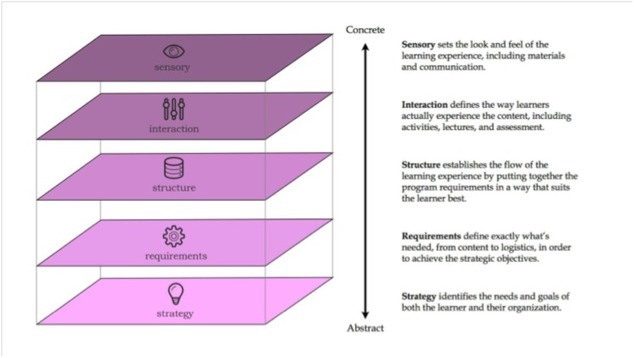The process of designing any sort of human experience, regardless of purpose or platform, is centered around reaching a desired outcome, ideally with as little fuss and as much joy as possible.
The purpose of an experience and the platform on which the experience takes place will vary: purchasing a plane ticket on a tablet to vacation, enjoying a musical performance in a theater, or learning to code in a classroom. Although each of these experiences require their own unique methods and frameworks, the elements that should be taken into consideration during the design process remain mostly the same.
As a learning experience designer, you should focus your time and attention during the strategy plane on identifying the gaps that exist between the learner and his/her desired outcome. Those gaps exist due to a lack of the following:
Knowledge: Do learners lack the proper information to complete a task?Skill: Do they have all of the right information but lack the ability to translate that knowledge into action that could be applied to a given situation?Confidence: Are they able to demonstrate or apply the skill, but do they hesitate or refuse to apply it?Motivation: Are they able to demonstrate or apply the skill confidently but just don’t want to do it?Access: Do they have all of the above but lack the proper tools or resources to complete a task?
Once you are able to properly identify the gaps that cause learners to struggle, you must design a solution that effectively addresses those gaps.
Learn more:
– https://gustmees.wordpress.com/2014/10/03/design-the-learning-of-your-learners-students-ideas/
– https://gustmees.wordpress.com/2015/01/28/practice-learning-to-learn-example-2/
– http://www.scoop.it/t/21st-century-learning-and-teaching/?tag=Learning+2+Learn
Source: boxesandarrows.com
See on Scoop.it – educación líquida










